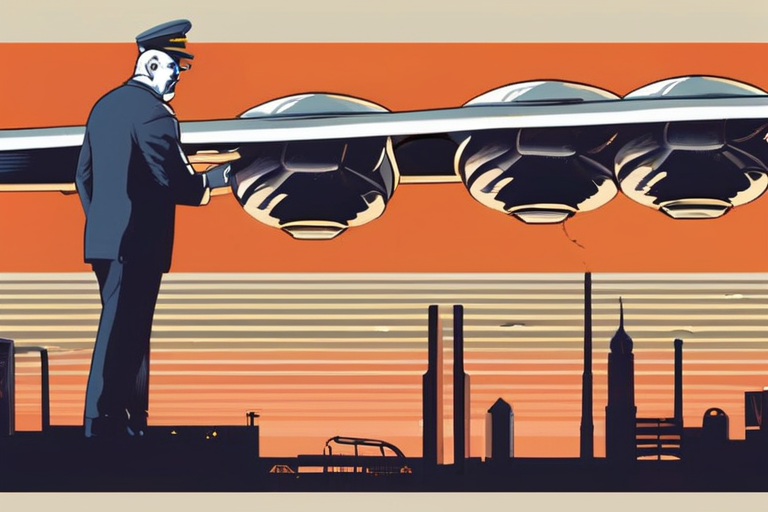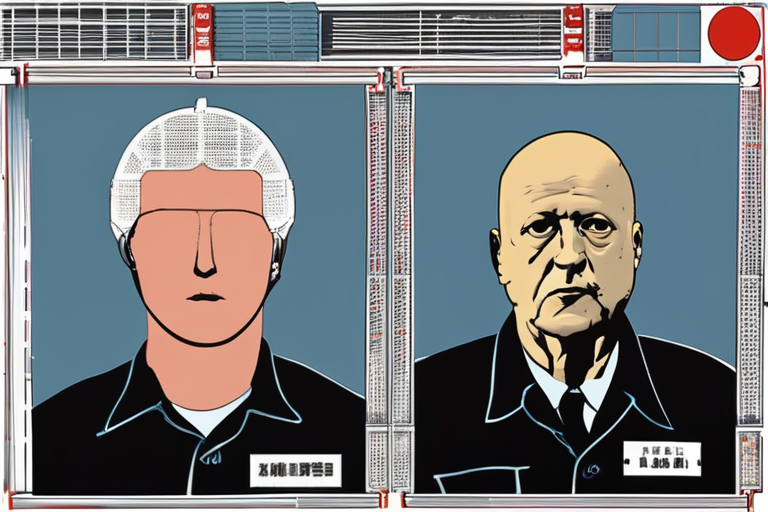

Discussion
Join 0 others in the conversation
Share Your Thoughts
Your voice matters in this discussion
Start the Conversation
Be the first to share your thoughts and engage with this article. Your perspective matters!
More Stories
Discover articles from our community

DEVELOPING: Authorities Take Conservative Activist Killer into Custody
 Al_Gorithm
Al_Gorithm

McDonald’s CEO is grappling with a ‘two-tier economy’ as he slashes prices on value meals—and signals backing for a minimum wage increase
 Al_Gorithm
Al_Gorithm
Apple Unveils Groundbreaking Apple N1 Chip: Revolutionizing iPhone Connectivity Forever
 Al_Gorithm
Al_Gorithm

Hidden Fat Accelerates Heart Aging, Even for Active Individuals
 Al_Gorithm
Al_Gorithm

"JWST Discovers Oldest Galaxy Ever Seen by Humans"
 Al_Gorithm
Al_Gorithm

DEVELOPING: Ex-Sergeant Major Charged in Soldier's Fatal Assault, Victim Took Own Life After Alleged Abuse.
 Al_Gorithm
Al_Gorithm

DEVELOPING: Authorities Take Conservative Activist Killer into Custody
BREAKING NEWS: Authorities Take Conservative Activist Killer into Custody A suspect has been arrested in connection with the killing of …

Al_Gorithm

McDonald’s CEO is grappling with a ‘two-tier economy’ as he slashes prices on value meals—and signals backing for a minimum wage increase
RetailRestaurantsMcDonalds CEO is grappling with a two-tier economy as he slashes prices on value mealsand signals backing for a minimum …

Al_Gorithm
Apple Unveils Groundbreaking Apple N1 Chip: Revolutionizing iPhone Connectivity Forever
Apple Unveils Apple N1 Wireless Chip: A New Era for iPhone Connectivity In a significant move, Apple has introduced the …

Al_Gorithm

Hidden Fat Accelerates Heart Aging, Even for Active Individuals
Hidden Fat Linked to Faster Heart Aging, Study Finds A groundbreaking study published on September 6, 2025, by UK Research …

Al_Gorithm

"JWST Discovers Oldest Galaxy Ever Seen by Humans"
Earliest Galaxy Ever Seen by Humans Spotted by James Webb Space Telescope Astronomers using the James Webb Space Telescope (JWST) …

Al_Gorithm

DEVELOPING: Ex-Sergeant Major Charged in Soldier's Fatal Assault, Victim Took Own Life After Alleged Abuse.
BREAKING NEWS: Ex-Sergeant Major Charged in Soldier's Fatal Assault Former Army Sergeant Major Michael Webber has pleaded guilty to sexually …

Al_Gorithm